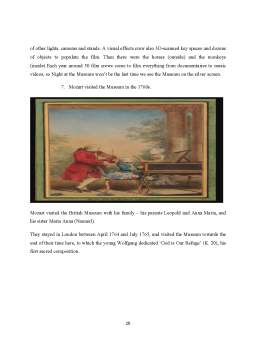Extras din proiect
Rationale
If you want to know the history, culture or tradition of a region, museums should be your main destination. In these buildings, filled with history, you can make a real journey in time, following the course of a civilization and witnessing the most important events. Apart from research and conservation, the essential purpose of any museum in contemporary society, is education.
This activity of a museum is complex, contributing both to the education of the general public and to the development of our imagination and sensitivity. A museum offers through its permanent or temporary exhibitions extended knowledge through an organized system. Thus, it also acts as a documentation center, giving visitors a host of updated information in an attractive and interactive form, easily accessible.
In this regard, The British Museum is the most relevant and should not be missed by any universal culture lover. The British Museum was founded in 1753 and it was the first national public museum in the world. From the beginning it granted free admission to all 'studious and curious persons'. Visitors’ number grew from around 5,000 a year, in the eighteenth century, to nearly 6 million today.
It is dedicated to human history, art and culture, and it is located in the Bloomsbury area of London. Its permanent collection, numbering some 8 million works, is among the largest and most comprehensive in existence and originates from all continents, illustrating and documenting the story of human culture from its beginnings to the present.
The eighteenth century: origins of the British Museum
The origins of the British Museum lie in the will of the physician, naturalist and collector, Sir Hans Sloane (1660- 1753).Over his lifetime, Sloane collected more than 71,000 objects which he wanted to be preserved intact after his death. So he bequeathed the whole collection to King George II for the nation in return for a payment of £20,000 to his heirs. The gift was accepted and on 7 June 1753, an Act of Parliament established the British Museum.
The founding collections largely consisted of books, manuscripts and natural specimens with some antiquities (including coins and medals, prints and drawings) and ethnographic material. In 1757 King George II donated the 'Old Royal Library' of the sovereigns of England and with it the privilege of copyright receipt.
The British Museum opened to the public on 15 January 1759. It was first housed in a seventeenth-century mansion, Montagu House, in Bloomsbury on the site of today's building. Entry was free and given to ‘all studious and curious Persons’. They divided people into the ‘learned and curious’ and the ‘rude and ill behaved’. To determine who were the ‘learned and curious’ it was assumed that legitimate researchers would be acquainted with an officer or a trustee and would have no difficulty procuring are commendation. The trustees had created a ‘known’ Reading Room public based on acquaintanceship with an officer or trustee. It was a narrow and strictly enforced interpretation.
The nineteenth century: expansion and discovery
In the early part of the nineteenth century there were a number of high profile acquisitions. These included the Rosetta Stone (1802), the Townley collection of classical sculpture (1805), and the Parthenon sculptures (1816).In 1823 the gift to the nation by George IV of his father's library (the King's Library) prompted the construction of today's quadrangular building designed by Sir Robert Smirke (1780- 1867).
By 1857, both the quadrangular building and the round Reading Room had been constructed.
To make more room for the increasing collections held by the Museum, the natural history collections were moved to a new building in South Kensington in the 1880s. This became the Natural History Museum.
Preview document
Conținut arhivă zip
- A journey to The Great British Museum.docx























